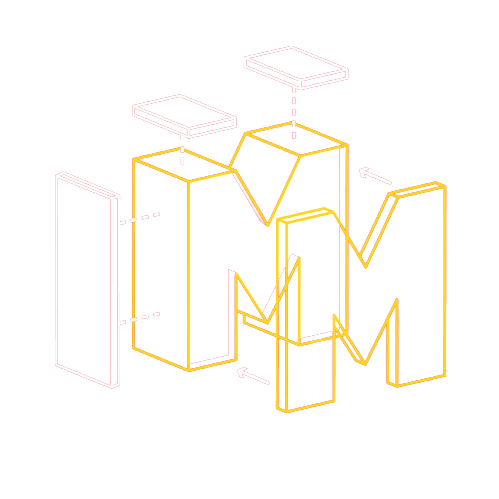Kenneth Vasquez Chicas' Excursion Report on the American Museum of Natural History Field Trip in New York City on November 11 2023
American Museum of Natural History - Excursion Report ○ AMNH Interactive Map
On November 11, 2023, 40 Science and Global Change Scholars went to New York City on a field trip to tour the American Museum of Natural History, learning about not only the origins and change in evolutionary studies but also the information that changed as well. The day began with a guided tour in the Hall of Vertebrae Origins by Dr. Merck, followed by our lunch break and finally a guided tour of the Saurischian and Ornithischian Halls by Dr. Holts. We also went on a self-guided tour of the Hall of Primates, learning about our close relatives and our own evolution. With all these tours, we learned about the origins of a large portion of the evolutionary tree, and how our views on this ancient history have changed as more discoveries have been made and more facts have been disputed and resolved.
With our first guided tour, we joined Dr. Merck in the Hall of Vertebrae Origins, learning about how vertebrates have evolved from jawless sea organisms into walking and breathing creatures that diversified in traits for different purposes and such. Here, we were first introduced to cladistics, an approach to reconstruct the evolutionary status of organisms and their relationships to each other. Just from this field of study we learned of the museum's first piece of outdated information, and that’s the entire layout of all the halls. Each exhibit was split into specific nodes that showed a specific evolutionary advancement that related different species to each other through these traits. Although this layout was revolutionary for its time, it was soon outdated as new studies disproved many of the relationships cemented in the museum's layout. In order to fix this error, the museum couldn’t have just moved exhibits around because not only would it be expensive and a hassle but also relationships change, they can’t always fix errors. An example of this included the previous assumption that turtles were related to pareiasaurs, visually represented in the layout of the turtle fossils and modes However it turned out that they belonged in a completely different part of the reptilian order. Changing the layout would be too strenuous and too expensive, but there’s another way. Instead, the signs relaying information about different species would reflect the modern theories about the evolution of different families, an easier fix instead of changing an entire layout. For the turtles, their signs reflected the new information known of their evolutionary relationships, an easier solution to simply changing the layout everytime something in the evolutionary tree changes.
Inside the vertebrae hall, the tour started with jawless organisms that could only live in water, the very start of life technically. The hall started with its first evolutionary node, the development of jaws that is theorized to have occurred due to a gene accident where some component of the throat mutated into a functional jaw for biting. Here the hall depicted sea creatures going from no jaws to suddenly full jaws, helping to solidify the theory about mutation since no half-jawed creatures have ever been found. The nodes continued, going from the development of limbs to lungs to new reproductive processes that didn’t just involve eggs. Each fossil showed the gradual evolution of vertebrates and these new traits that would pop up in the evolutionary tree. The hall did a great job at displaying these developments with descriptive infocards and the effective node-layout, and it was clear that the hall was made more for a mature audience. The reason for this observation is that the hall lacked interactive displays that a younger crowd would enjoy, and a kid isn’t exactly too ecstatic about the evolution of fish and amphibians. But for those interested in evolution and the origins of almost all animals, the Hall of Vertebrae Origins is perfect as an important specimen to the visualization of cladistics.
The next tour was with Dr. Holtz in the Halls of Saurischian and Ornithischian Dinosaurs, organized in the same outdated way that the Hall of Vertebrae Origins was organized. Here we went into depth about the field of paleontology, not only learning about how it has led to the discoveries of many creatures but also how it has changed views on evolution. Here, Dr. Holtz first pointed out how the entirety of the evolutionary tree can’t be accurately depicted because the rooms are just so small and relationships are always changing and ever so complex. Because of this, relationships aren't only outdated in the museum layout, but they’re also too limited to accurately represent any sort of evolutionary relationship. Of course as spoken about before, the museum can’t just redesign the entire layout of each hall or else it would be too expensive. The one solution talked about is changing the descriptive infocards about each fossil and to accurately depict the evolutionary tree there. There they would show the name of the fossilized species, a small description of the creature and its close relatives, its approximate location, and at which moment it lived on the geological timeline. Changing the infocards for each exhibit is a much more effective way of conveying information instead of changing an entire layout to better portray current information.
At the start of the guided tour, Dr. Holtz showed off one of the museum's main attractions in the Hall of Saurischian Dinosaurs, the gigantic apatosaurus. Dr. Holtz spoke about one of the most significant evolutionary changes for land creatures, legs directly beneath the creature’s body. A change like this allowed for greater weight to be applied onto its limbs, allowing for an increase in size which in turn allowed for other advantages. For the apatosaurus, this evolutionary change allowed it to reach leaves up high in trees’ branches, allowing it to maintain its immense size. Later in the tour, Dr. Holtz came back to this point and showed the staggered walking pattern of a stegosaurus’ footprints in the Ornithischians Hall. He said that not only did the change to under-body legs lead to immense size, but also to a complete change in walking patterns and mobility. One could see this change in the footprints of most exhibits, showing a change from the outward-pointing creatures of the Vertebrae exhibit to the under-body legged creatures of both dinosaur halls. Another important development that Dr. Holtz pointed out was the development of countercurrent exchange that allowed dinosaurs to maintain their temperatures and actually survive in an ancient landscape. By comparing pterodactyl fossils to the fossils of birds, one can see similarities in how blood would flow and the chambers which existed in both to allow for proper warmth. Dinosaurs were not only cold-blooded or only warm-blooded, they were in an in-between state. A change like this shows the ancient connection modern animals have to dinosaurs in the past through their anatomy and traits.
Going through both dinosaur halls, one could see that they were targeted to a certain audience all the way through. For example, there were more interactive displays in both halls, starting with a mini theater in the Hall of Saurischians, with dinosaur egg samples one could touch in the Hall of Ornithischians. Interactive exhibits like these show that there is an aim at giving kids some hands-on interaction in the museum, playing and learning at the same time. And when one thinks about it, it makes sense that the dinosaur exhibit has all the interactive exhibits since most kids would be attracted to the cool fossils and the big size of these creatures. The Hall of Vertebrae Origins seemed to lack displays like this, making me think there’s a lack of interest from children towards organisms like turtles or frogs. However, why should the museum ignore the lack of audience for a hall when it could try and bring in greater numbers by offering a wider variety of media for all groups. Instead of just offering just infocards for a mature audience, they could include scale samples for kids to feel and be interested in. Or they could have screens or smaller virtual exhibits for younger crowds and others to become interested in topics like the evolution of vertebrates. Interactive displays like these could be more inviting for a younger audience and actually interest them in topics other than dinosaurs.
Our final tour was a self-guided tour in the Hall of Primates, looking at the evolution of not only humans but of our close relatives as well. Here, the hall was grouped into families that visualized the mammalian order that includes primates like apes, gorillas, and people. The hall started by showing that primates developed to be climbers and good at grabbing, shown by the trends of fatty palms and soles, opposable thumbs, and an upright posture. Information like this was shown in visuals behind the actual fossils and specimens, giving more dimension to the exhibit as a whole. It then would split off into the individual families of primates, showing general information like location and name but also displaying bones so viewers can compare the skeletons of different primates. The Hall of Primates lacked interactive displays, making me think that it was targeted more for a mature audience since the skeletons weren’t exactly of interest to a younger audience. Generally, there was a lack of anything interesting for children since most of the hall consisted of skeletons, models of primates, and information on different species. Maybe the skeletons of humans and children frightened some kids away since exhibits like these could’ve been a little morbid for them. What could’ve been added to this exhibit to make it more welcoming and interesting could include a mini theater that shows the evolution of humans and the evolutionary connection to other primate species. Another option could have included some sort of way for children to compare their features to the features of other primates, such as having hand or feet models out to show size and trait differences. But for a mature audience, the information displayed along with the skeletons and models made for a pretty effective display of primate evolution and conveyed the concept of the mammalian order very well.
Going through all three tours, we came back to Maryland with new knowledge not only regarding evolution but also how quickly scientific discoveries can change our perceptions over time. Not every piece of information is concrete as more and more research goes into discovering the truth behind everything we know. Something we may accept as solid truth could suddenly be disproved with empirical evidence that makes old theories seem silly, but it's just the natural process of science. Our New York City trip showed us just that, that not every piece of information should be taken as fact but should instead be seen as something that can either be further proven or be disproven.



